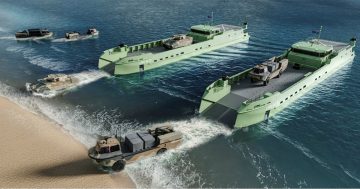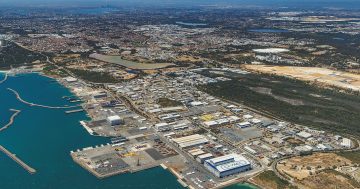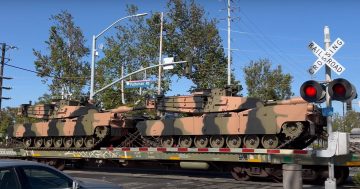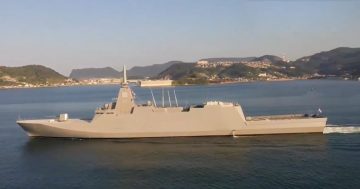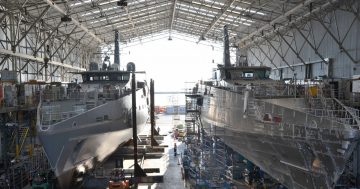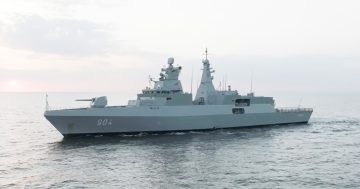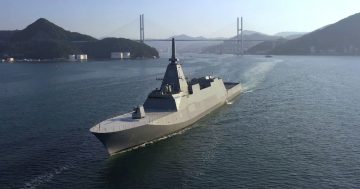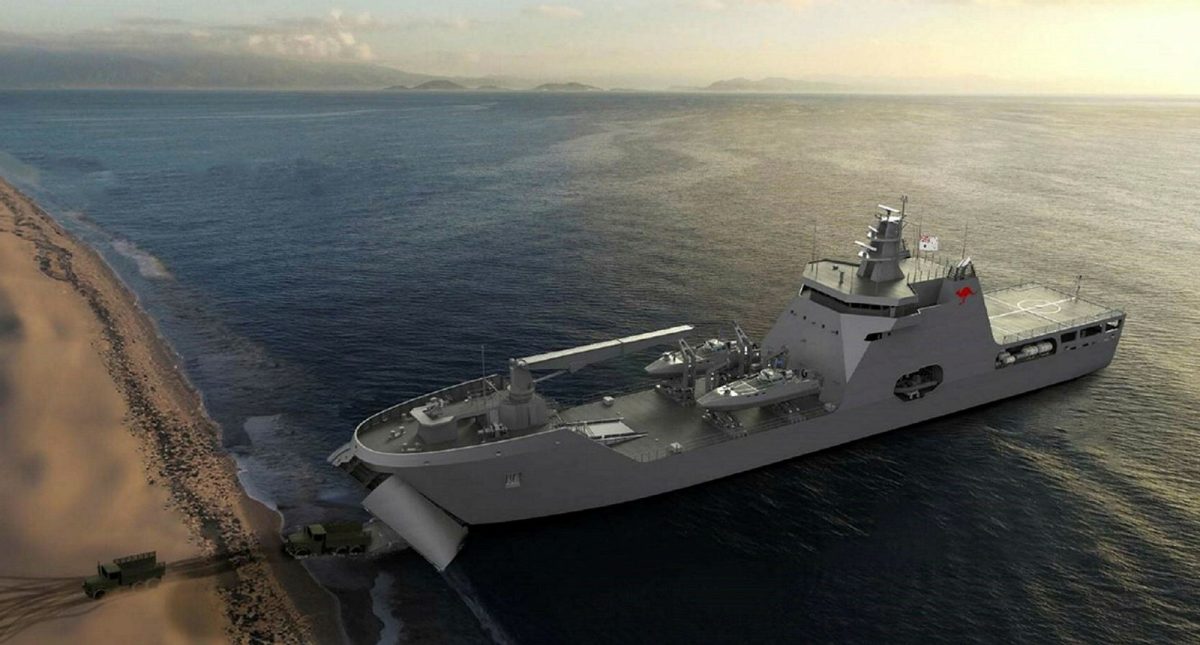
The Damen LST will displace nearly eight times that of the Balikpapan class LCHs it will replace. Image: Damen via ADF.
The Commonwealth has announced that a design by shipbuilder Damen has been selected to fulfil the Australian Army’s amphibious heavy landing craft requirement.
The announcement of the preferred Project LAND 8710 Phase 2A Littoral Manoeuvre Vessel – Heavy (LMV-H) follows almost a year to the day the government’s selection of NSW-based Birdon Group for the smaller LAND 8710 Phase 1A LMV-M (Medium) requirement.
Both vessels will be built by Austal at its Henderson shipyard south of Fremantle in Western Australia, with the government announcing in May that an acceleration of the LMV-M project will see the first of 18 vessels delivered in 2026.
The LMV-H replaces the capability lost with the retirement of the last of eight Balikpapan Landing Craft Heavy (LCH) vessels in 2014. In line with Army’s increasing emphasis on amphibious operations in littoral areas of the Indo-Pacific, the LMV-M and -H will enable vehicles, soldiers and equipment to be rapidly deployed ashore on beaches.
With a displacement of 3900 tonnes, the Damen LST100 is nearly eight times heavier than the LCHs it is designed to replace. The LST is also twice as long as the LCH at 100 metres long, and has a beam of 16 metres.
It has a carrying capacity of 500 tonnes of military vehicles and equipment – nearly four times that of the LCH – with example loads being six M1A2SEP3 Abrams Tanks, 11 AS21 Redback Infantry Fighting Vehicles, or 26 HIMARS long-range strike systems. Each vessel will be equipped with self-defence weapons and military communications systems.
The LST100 is actually more comparable to the former 5700-tonne, 127-metre-long HMAS Tobruk, a Landing Ship Heavy (LSH) based on a British design which was built in Newcastle and served in the Navy from 1981 to 2015.
Construction of the first of eight LMV-Hs is scheduled to start in 2026 subject to commercial negotiations, and both LMV programs are expected to directly employ 1100 workers and a further 2000 indirect jobs.
Minister for Defence Industry and Capability Delivery Pat Conroy said it was important the new vessels would be built in Australia from Australian steel.
“This not only underscores the Albanese Government’s commitment to keep Australians safe but also to a safer future made in Australia,” he said.
“This project is an important part of our plans for continuous naval shipbuilding in both South Australia and Western Australia, which is creating thousands of well-paid and high-skilled jobs.”


